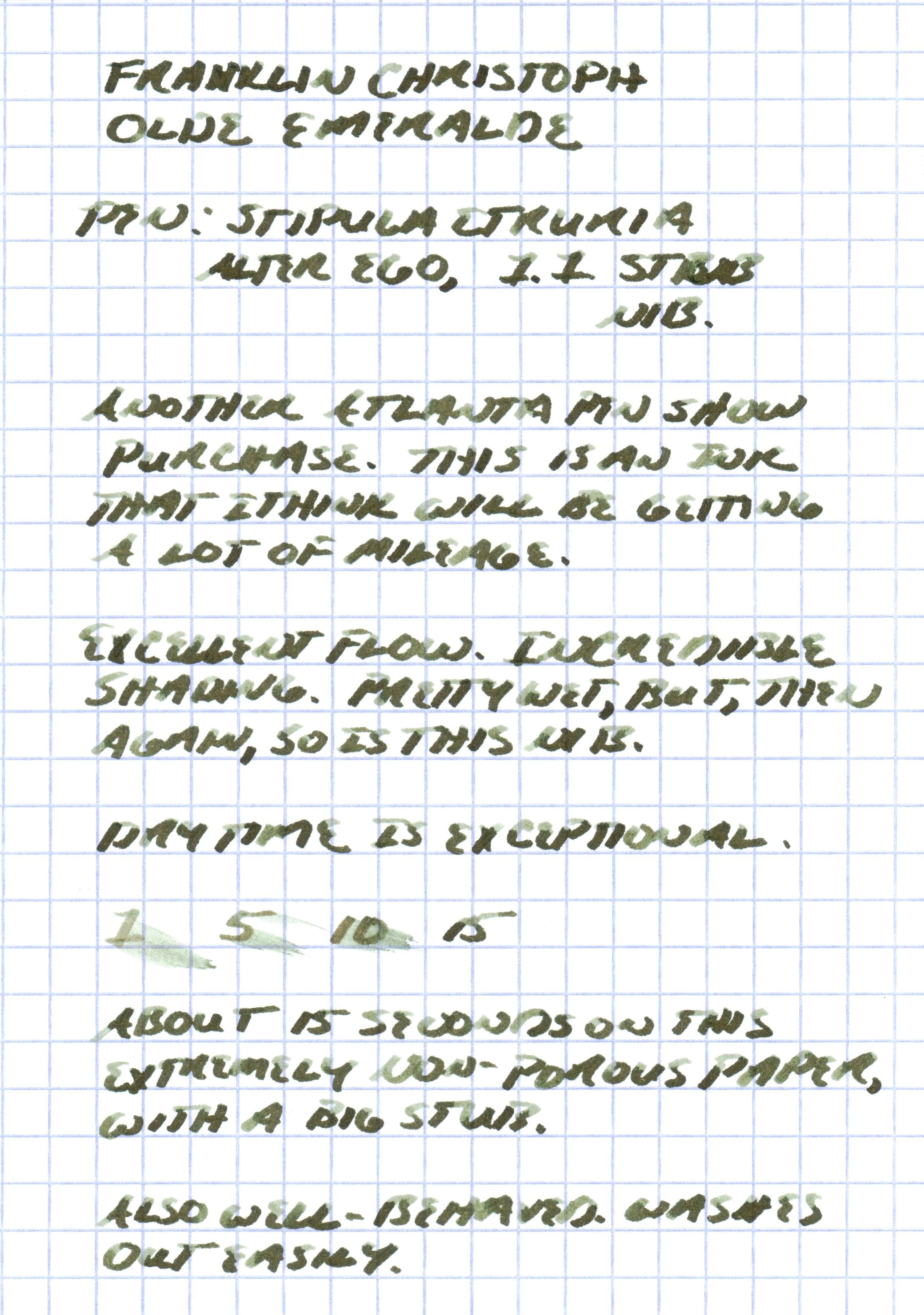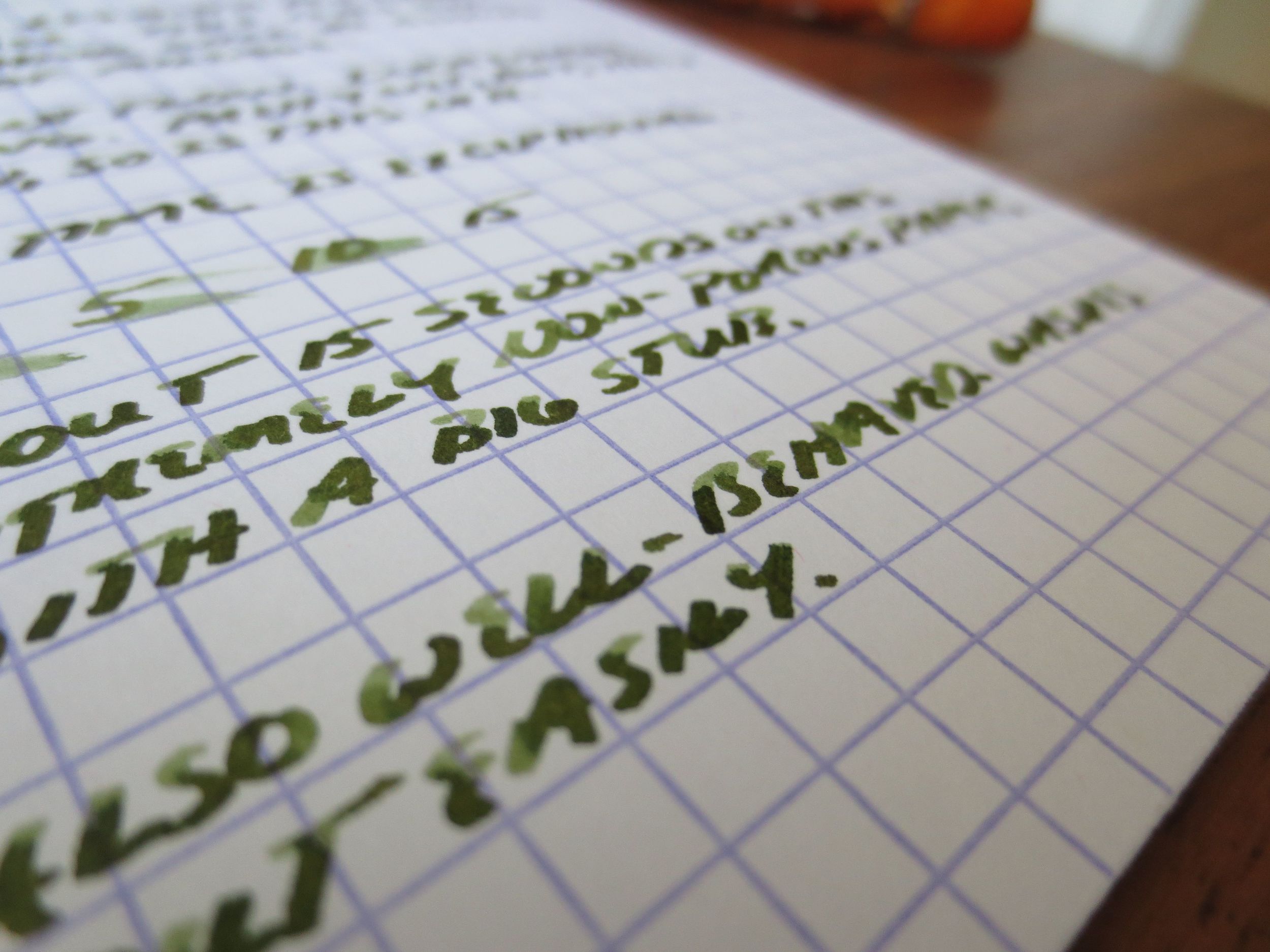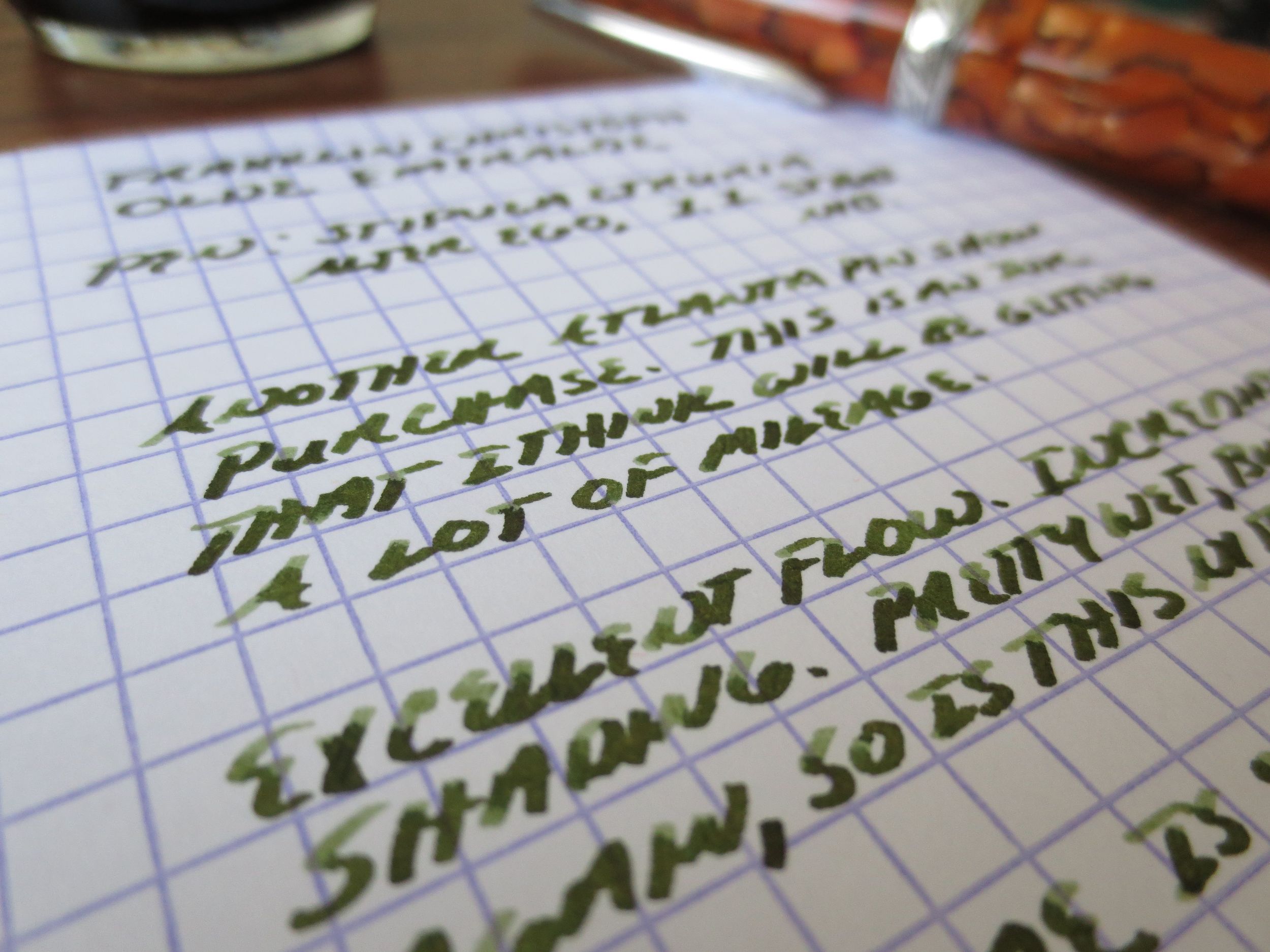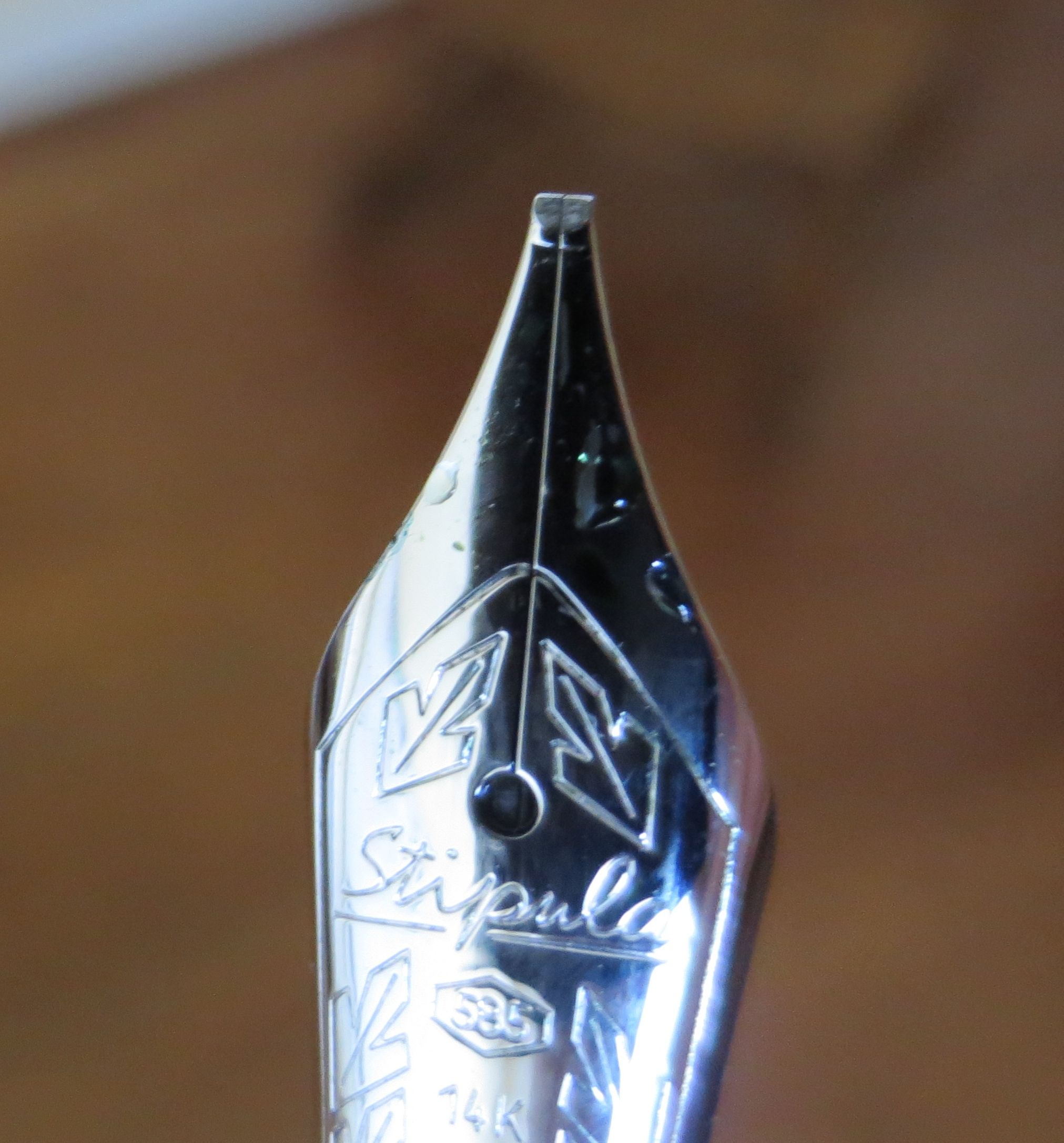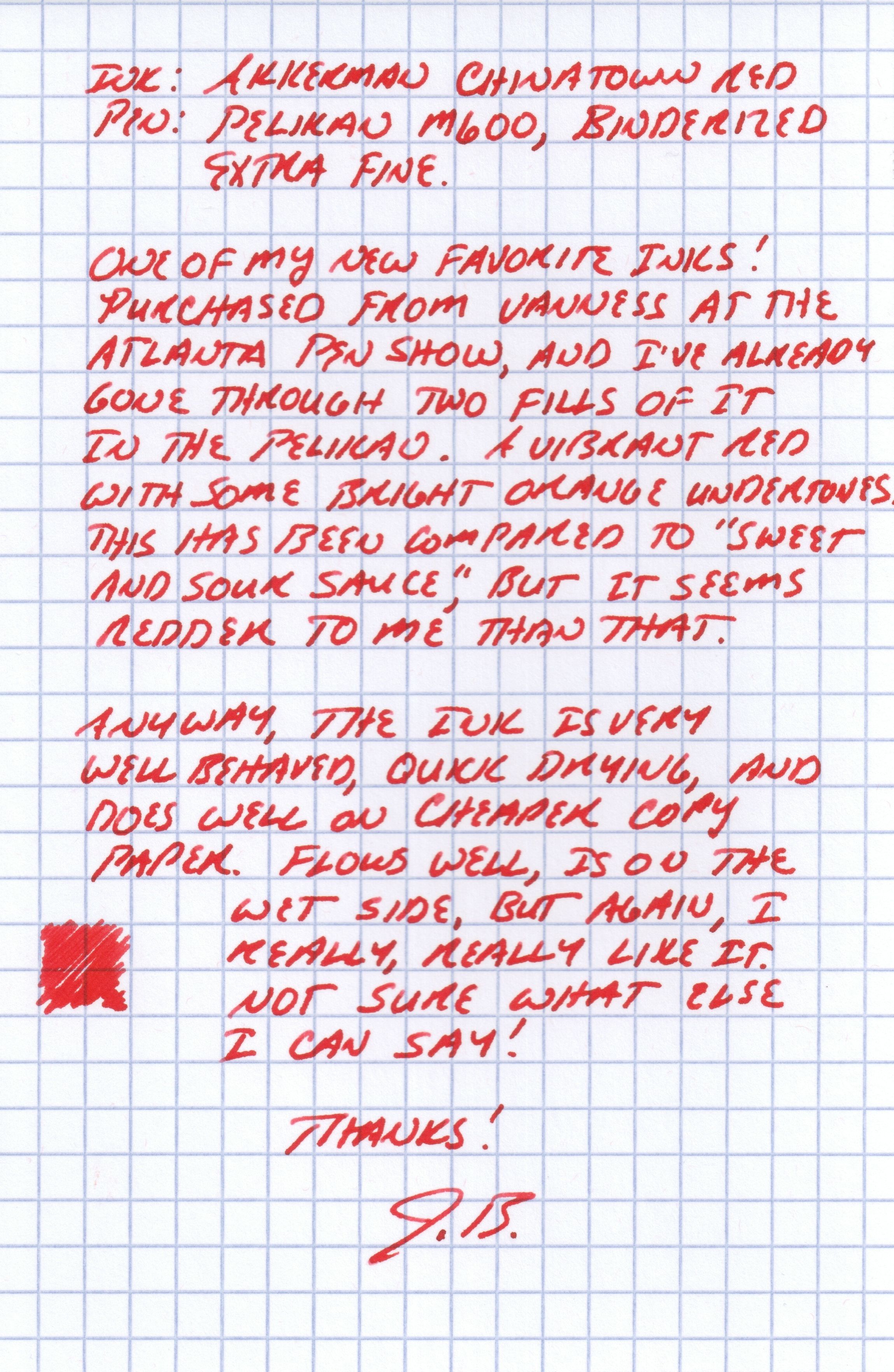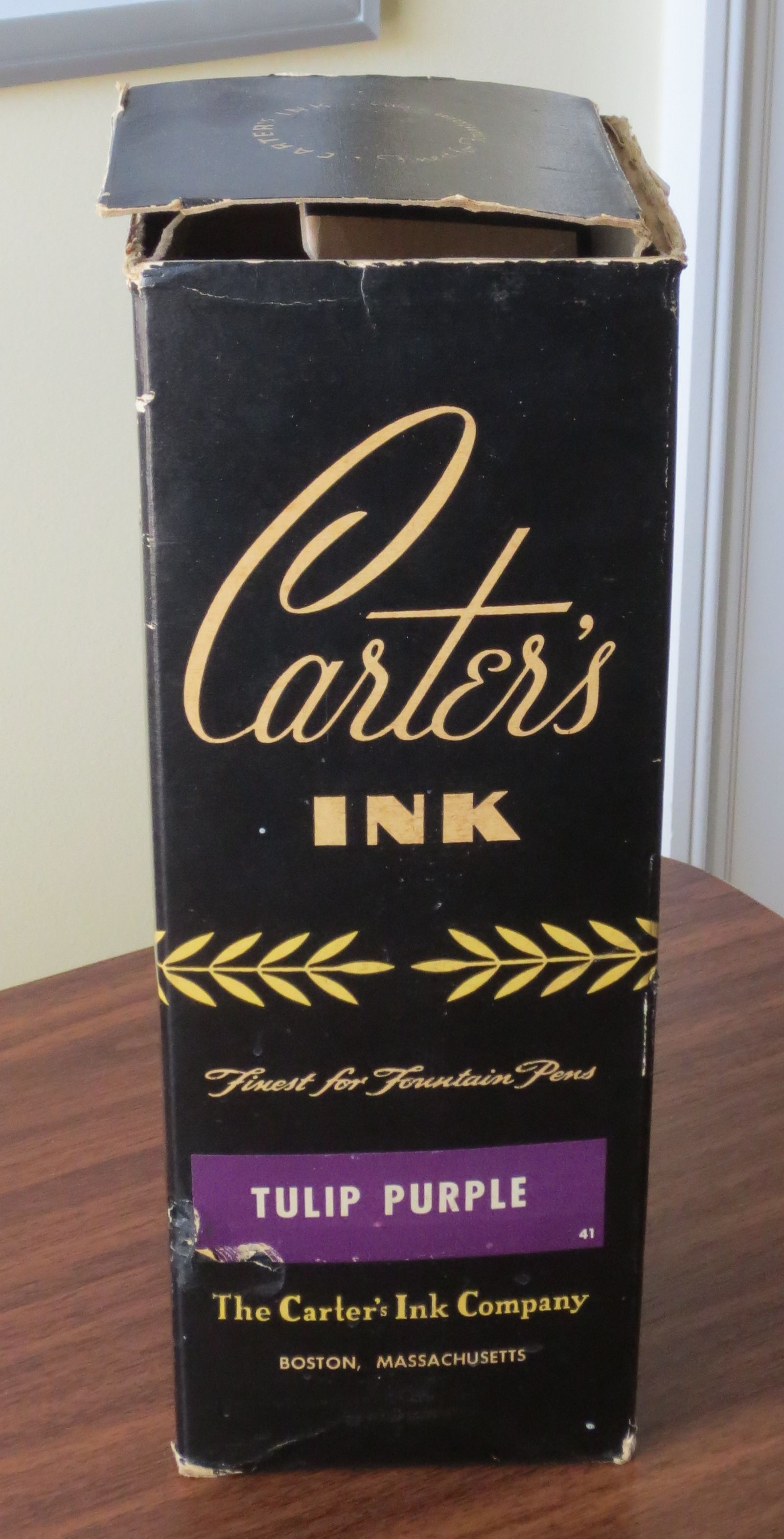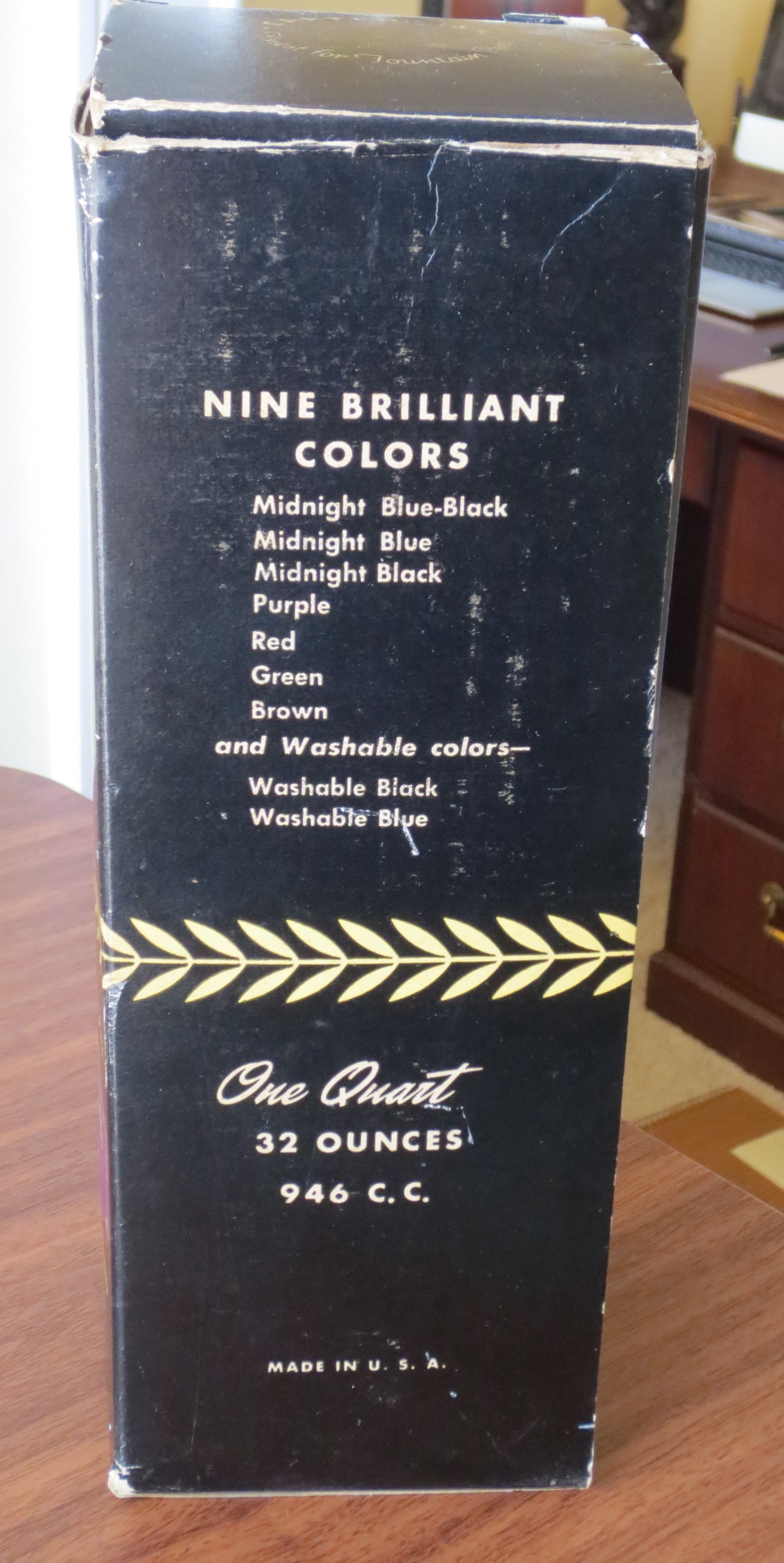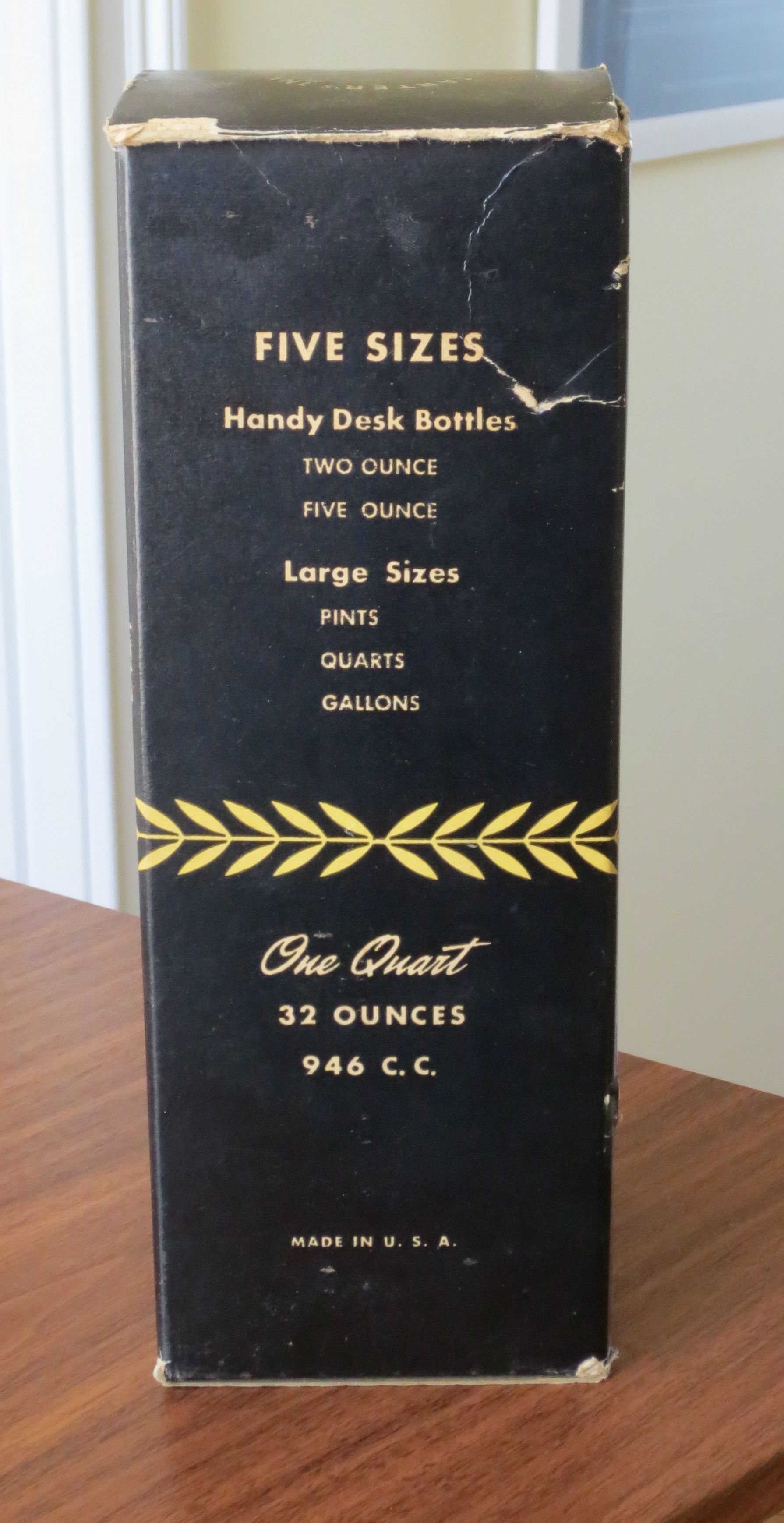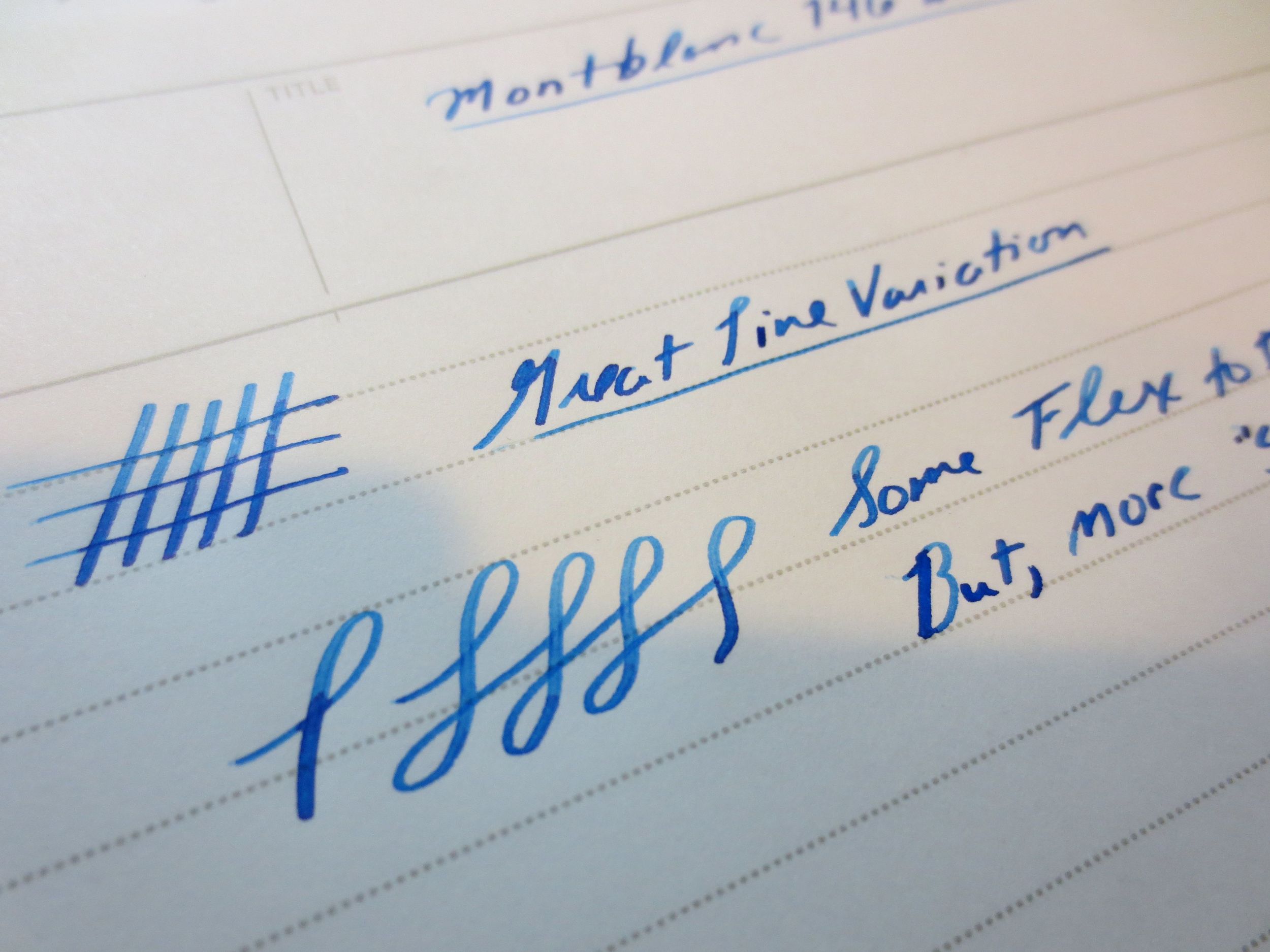This pen tends to generate strong opinions among the pen community. Some are very vocal in their dislike of all things Montblanc, primarily because of the no-holds-barred marketing campaign by the company, the astronomic retail prices charged for a new pen in a Montblanc boutique or authorized retailer, and what some perceive as annoying questions they get from people immediately upon learning that they collect pens, such as "So how many Montblancs do you have?" or "Do you have a Montblanc?" On at least two occasions, I personally have mentioned to two separate acquaintances that I visited a pen show, only to be met with, "Did you see a lot of Montblancs there?" And the truth is, you do, because so many people have received these pens as gifts, never used them, and try to unload them for cash (particularly the more common 144's, 146's, and 149's), that there are hoards of them at shows, and they often go for prices far below the retail prices charged in boutiques. Keep in mind that a pen purchased secondhand does not come with a Montblanc warranty, so you're on your own if the pen breaks, and it will be up to you to locate a reasonably priced pen repair person or pay Montblanc their standard charge to fix it.
That said, once you understand that the market for second hand Montblanc pens can be far easier on the wallet to navigate, it makes it much easier to enjoy these pens as pens, and not as status symbols. The one Montblanc that I have is the Meisterstuck 146 "Le Grand," the second-largest of the Meisterstuck series, following the 149 "Diplomat." I purchased my 146 at the 2012 Washington D.C. pen show. I've used the pen fairly extensively for the past year, and intentionally waited to review it so that I could give it a fair shake.
The Bad:
- The nib, as originally purchased, had a terrible baby's bottom that caused the pen to skip on the downstroke every time I wrote with the pen. This required work by two different nibmeisters to fix to my satisfaction. The first ground it to a gorgeous medium stub, but the flow issue persisted. Mike Masuyama, of Mikeitwork.com, finally figured out what was going on at the 2013 D.C. Pen Show a year later, right when I was at the point of selling this thing. Now, however, I have a nice medium stub nib that is customized to my hand. Though it's become one of my favorite daily writers, a pen that retails for well over $500 should not have issues with the nib out of the box. (For those unfamiliar with the term "baby's bottom," check out Richard Binder's Glossopedia at www.richardspens.com. In short, the nib is too rounded due to the manufacturer's efforts to make it smooth, resulting in the ink not reaching the surface of the page.)
- The price. I paid below retail for this pen. However, once you consider that I had to pay an additional $65 over the course of a year for nib work to get the pen writing consistently, that jacks the price back up into the questionable category.
Conclusions:
- Am I glad I own this pen? On the whole, probably. I'm not going to sell it. I would consider it a 146 to be an essential piece for any collector who wants to have a sampling of the "big pens" in their collection. That's a personal preference.
- Would I buy more Montblanc pens? If the price was right. I'd love a 149, but it's not at the top of my wish list. I've also eyed the Johannes Brahms limited edition and the Midnight Black Starwalker, but it's not been enough to get me to pull the trigger.
- The medium stub nib pushes this pen over the edge for me on this particular pen. It's wide enough that you get the line variation, without the "shovel" quality that renders some stubs too wide and wet for everyday writing.
